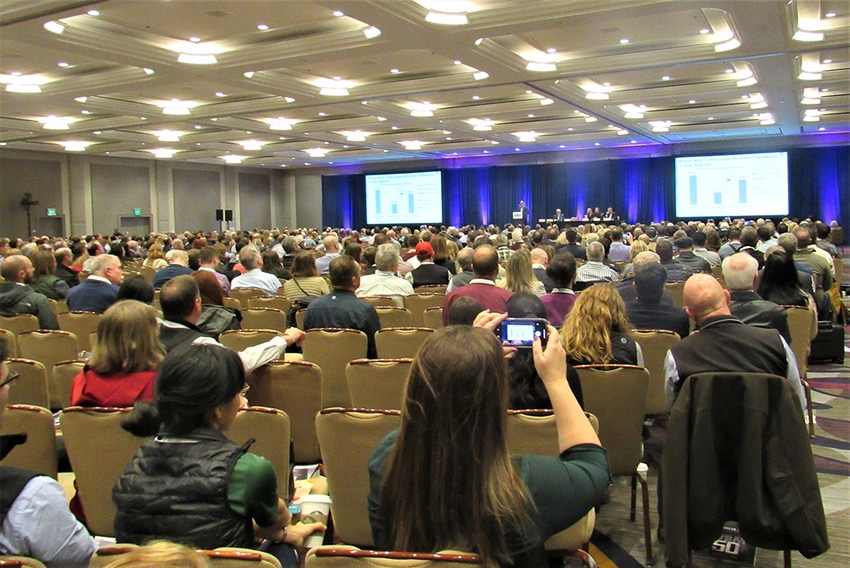
While California’s Silicon Valley Bank doesn’t sell or distribute wine, they do offer financial services to winery clients and vineyard operators, so they keep a close eye on the status and health of winemaking.
And what they’re seeing in their 2019 outlook is an industry facing numerous challenges over the next five years.
That’s the opinion of the bank’s wine division guru Rob McMillan, who assesses current conditions with street-level intelligence to provide a forecast based on micro- and macro-economic and behavioral trends, according to the company.
He likens current business conditions to those of the early 1990s when baby boomers made their retail presence known and drove record wine sales for 25 years.
“We should expect the millennial generation, now all over 21 and into their high-spending years, to do the same. But we’re seeing the opposite,” he says. “Wine industry growth has been muted for the past several years and is now moving into negative territory for the first time since 1993.”
Another view
A different viewpoint comes from IWSR, a data source for the alcoholic beverage market.
“Our analysts spend months traveling the world to speak with suppliers, wholesalers, retailers, and other beverage alcohol professionals to assess what is happening market-by-market in this fast-changing business,” says Mark Meek, IWSR CEO. “The data tells us about trends, challenges, and opportunities facing the industry.”
And what the latest data shows in the IWSR Drinks Market Analysis Global Database is this - wine and beer volume is down, but the market is expected to grow by three percent over the next five years. While the global market for beverage alcohol in 2018 logged in at a trillion dollars, prospects are bright that the rate of growth will be 7 percent by 2023 as consumers trade-up to higher-quality.
American beer consumption slid 1.6 percent with a slight rebound increase anticipated in 2019 while wine volume declined, but value increased. Wine consumption decreased in several countries while U.S. market consumption was flat, overall a global decrease of 1.6 percent in volume. But while consumers are drinking less wine, they’re drinking better product which increases wine value.
The retail global wine volume by 2023 is projected in excess of $224 billion, up from $215 billion in 2018 with the brightest spot being the sparkling wine category, driven in part by prosecco. IWSR spokesman Greg Cohen notes: “In the U.S. wine category, our analysis shows that still wine grew .3 percent in 2019 to a total of 326 million 9-liter cases (down from the 2017 growth of .9 percent). Imports lost slightly while domestic volumes increased .7 percent. Overall, the 2014 to 2018 compound annual growth rate of still wine in the U.S. was 5.1 percent.”
And not to be overlooked - the average retail price of still wine in American marketplaces last year was $14.43.
Brandy Rand, chief operating officer of the Americas at IWSR, summarizes the current situation this way, “Although global wine consumption was down last year, U.S. wine showed a .2 percent growth. Also positive for U.S. growers and winemakers is the fact that global value of U.S. wines is increasing, expected to reach almost $30.5 billion by Year 2023 and that would represent a 5.6 percent increase in value from 2018.”
For more news on pests, disease management and other issues affecting vineyards, subscribe to the bi-monthly newsletter The Grape Line.
About the Author(s)
You May Also Like




